According review of the legendary Soviet lens Helios-40-2 1.5 / 85 many thanks Alexander pamp Neborachko.

Helios 40-2 85mm F1.5 lens overview
In my vote on best soviet portrait lensHelios-40-2 is the undisputed leader, while having a huge margin. The second place is held by the most massive fixed-telephoto Jupiter-37A, and the sharpest outrageous closes the top three Kaleinar-5N... Therefore, without further ado - Helios-40-2 is ideal for portrait photography.
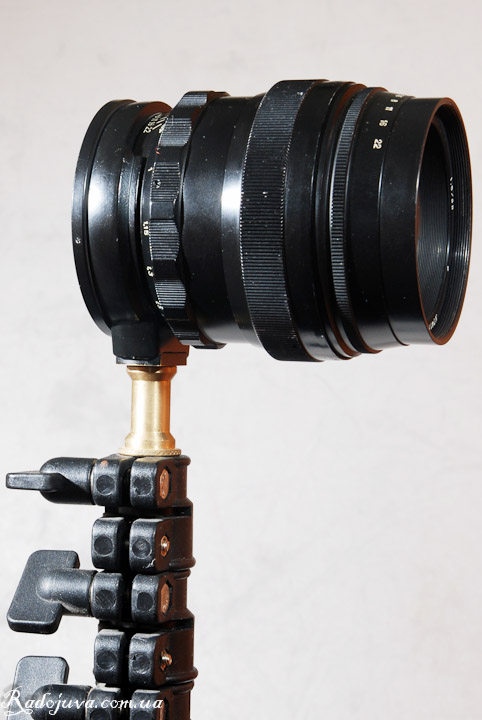
Helios-40-2 has a tripod socket and black color
TTX Helios-40-2
The weight: about 900g
MDF: 0.8m
Focal length: 85mm
Front Filter Diameter: 67mm
Factory manufacturer: Krasnogorsk Mechanical Plant named after S.A. Zvereva
Aperture Limits: F1.5-F22
Number of aperture blades: 10
Optical design: 6 elements in 4 groups, Biotar scheme
Resolution: 36/17 lines / mm (center / edge)
There are lens modifications, in particular, the differences may relate to the diameter of the filter and the minimum focusing distance. Also, there is an earlier “white version” of the lens called simply Helios-40. Read about the differences below.
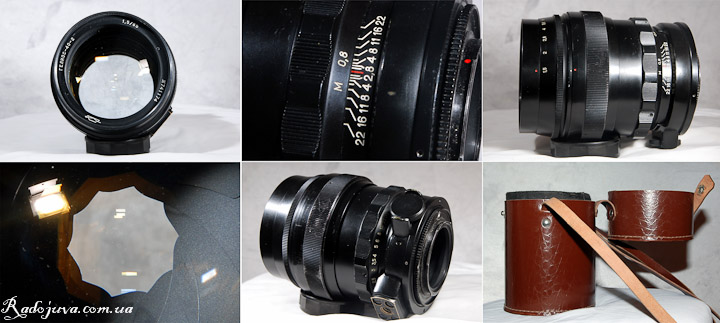
View Helios-40-2 from different sides. Case for Helios-40-2 and aperture view.
I strongly recommend that you read the materials on Helios-40 (2) on club.foto.ru, namely in the section about Helios-40 (2). I also advise you to take a look at Helios-40 review by Sergey Elizarovthat has a wonderful comparison of Helios-40 (2) and its ancestor Carl Zeiss Jena Biotar 1,5 / 75. Fans of rigorous technical tests will love the article. photozone.de about Helios-40-2. Interesting conclusions, near which you simply can’t pass by, on the page Myths and Reality Helios-40 (2)... Another brand new head-to-head test Helios-40-2 and Carl Zeiss Planar 85 / 1.4 c / y on Dmitry Evtifeev's blog... Below, in fact, about the lens from Radozhiva.
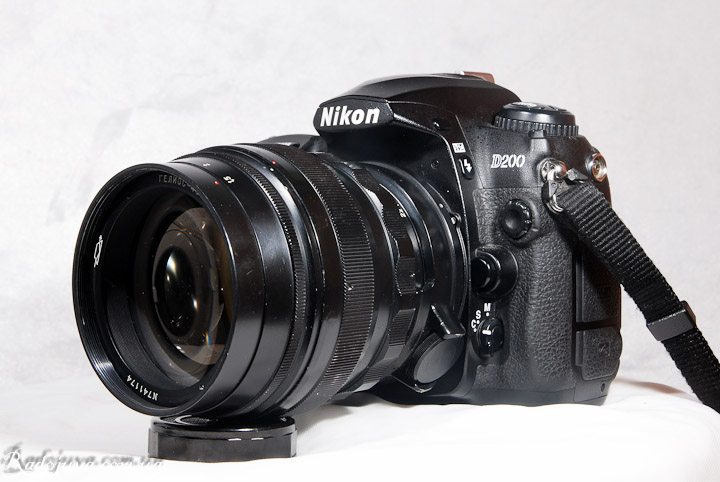
View of the Helios-40-2 lens on a modern central control wheel
Helios-40 and Helios-40-2 is a modification of the lens Carl Zeiss Jena Biotar 1,5 / 75. Helios has a slightly longer focal length. The optical design is the same - 6 lenses in 4 groups. Helios-40-2 classic Planar (Biotar). Please note that in this review in my hands was exactly Helios-40-2 and I write about him. My copy of MDF has 80cm, and the filter diameter is 67mm, its number is No. 741174. If you take into account the fact that the first two digits in the number of the Soviet lens usually indicate the year of manufacture, then my Helios-40-2 is much older than me and was released in 1974. The lens barrel is slightly frayed, but the lens is in good condition, without scuffs and scratches, enlightenment is in place.
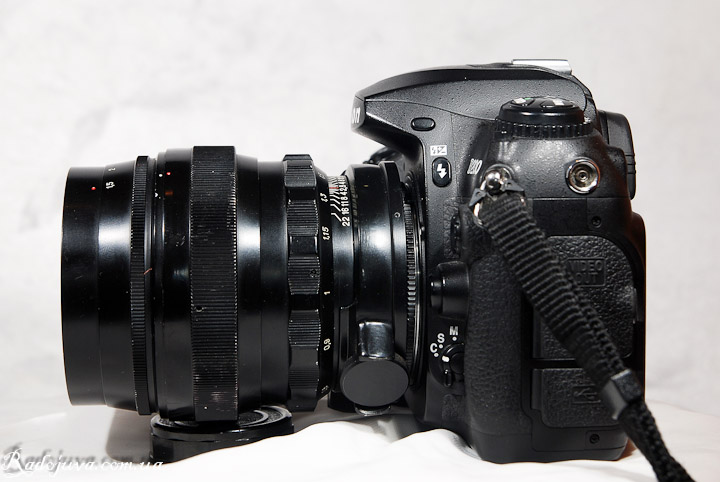
View of the Helios-40-2 lens from the side on a modern central control gear
The main modifications of the Helios-40 lens (2)
- Helios-40 1.5/85 for SLR cameras. Old white version without coloring. Uses M39 × 1/45,2 mounting thread.
- Helios-40T 1: 1,5 F = 8,5cm - option for television cameras. G-40T differs from the regular version of the G-40 by aperture control and camera mount. Helios-40T has only one diaphragm ring. The optical design of Helios-40T is the same. In any case, it will be necessary to saw off the back for installation on a modern digital SLR camera. When you close the diaphragm on the G-40T lens, in the blur zone, you get the same "circular" saw, like his brother G-40. Produced at KMZ (Krasnogorsk Mechanical Plant named after S.A. Zverev, Krasnogorsk.)
- Helios-40-2 1.5/85 for SLR cameras, has a M42 × 1 / 45,5 mounting thread. The main difference from Helios-40 is only in the landing thread, body color and tripod socket. The Helios-40-2 version itself also has options with minor differences. For example, there are options with a 66 mm filter and 1.15 m MDF.
- Cyclops 1.5 / 85 (Aka CYCLOP 1,5/85) for night vision device. The main difference is the different frame and the complete absence of a diaphragm. Perhaps Cyclops has a different enlightenment. There is also a version with the name in Latin 'Cyclop 1.5 / 85'. The lens was produced at ROMZ (Rostov Optical and Mechanical Plant). Overview here.
- New Helios-40-2issued by KMZ in 2012 year. There is a modification Helios-40-2-N 1,5 / 85 or HELIOS-40-2-N 1,5 / 85 under Nikon F and Helios-40-2-C 1,5 / 85 or HELIOS-40-2-C 1,5 / 85 for Canon EOS and HELIOS-40-2 1,5 / 85 for M42 thread. Since 2014, it has a new body design and double-layer coating, without a tripod foot.
- HELIOS-40 F = 8,5cm 1: 1.5 - lens prototype for cameras with bayonet mount Contax-Kiev (the lens came with an external mount). 1950-1951, MDF 1 meter, looks like this.
- Meyer Optik Görlitz Somnium 1:1.5/85mm (2015) - rebranded and repainted Helios-40-2 2012
- Meyer-Optik Gorlitz Biotar 75mm f/1.5 II (2023) – modern Carl Zeiss Jena Biotar 1,5/75
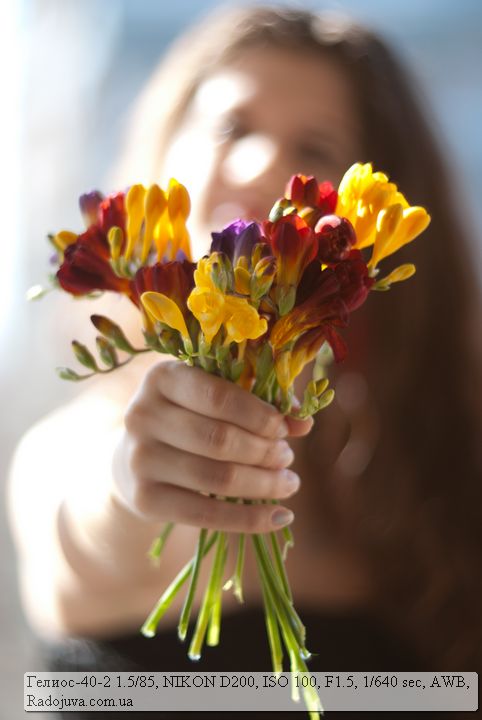
Background blur on Helios-40-2
Myths about Helios-40 (2)
- The first myth is the opinion that Helios-40 was copied from some very ancient and not popular lens. Often give an example Leica Summarex 1,5 / 85 or Cyclops 1.5 / 85, produced at the Rostov optical-mechanical plant. Summarex is a real myth. Regarding Cyclops, everything is just the opposite, Cyclops was a copy of Helios-40 without a diaphragm. Many photos on Cyclops can be found here.
- There is an opinion that the aperture of the lens is actually not F / 1.5, but F / 1.3, motivate this by the fact that according to GOST there was no value of 1.3, therefore they wrote 1.5. Thus, the lens is credited with a much larger aperture.
- There is a myth that with the help of Helios-40 anyone can take a gorgeous portrait. It's a delusion. The lens is very difficult to work with. Achieving good image quality with the right focus point and the right composition will take some hard work. This is due to the fact that Helios-40-2 is sharp at F1.5 only in the center, and the depth of field is very shallow. Only a person with experience in manual optics can cope with Helios-40-2.
- There is a myth that one photographer in his entire life tried the very latest very expensive photo equipment, super modern digital backs, switched from a full frame to a medium and large format, but never found the lens that would give an image that would give an image that he wanted to receive. As a result, he accidentally stumbled upon Helios-40 and discovered the full power of the “Solar” lens, with which he began to create masterpieces. Perhaps this is not a myth. But personally, my opinion is that this is a fallacy, since every photographer who is less self-respecting understands that it is he who shoots, and not the technique, because important how to take pictures, and not by any means. If you are chasing an “interesting” technique, then you can miss the very opportunity to shoot, and sometimes miss your whole life.
- A lot of various information on the Internet and beautiful photos. The myth is that almost all photos come with quite serious processing, at least with an auto contrast or b / w, which does not show a real Helios-40-2 picture. In reality, the raw picture from Helios-40-2 does not look as interesting as after processing. Therefore, just keep this in mind when choosing between Helios and another lens.
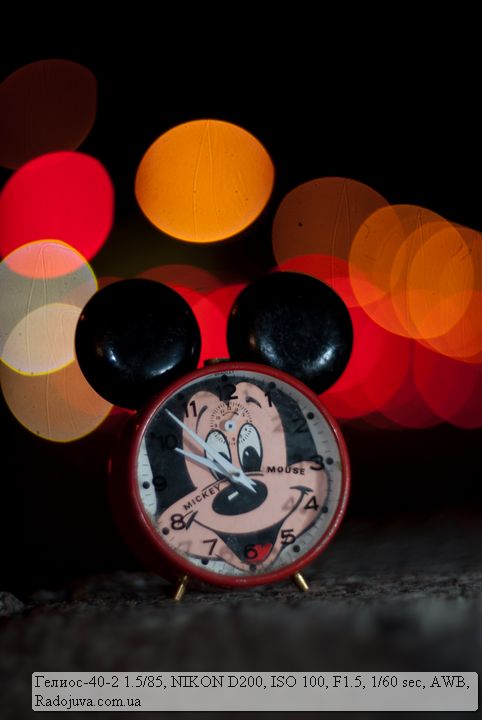
Bokeh on Helios-40-2 85mm F1.5
The main features of the Helios-40-2 lens:
1. In the Helios-40-2 lens design, almost everything is made of metal and glass. The lens is older than me, and continues to please with its work. This is a serious indicator of excellent build quality.
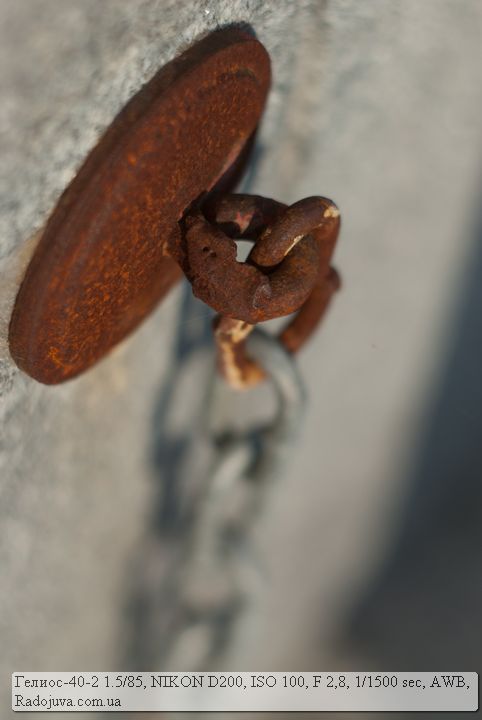
Photo on Helios 40-2 85mm
2. The lens is very large aperture for such a focal length. The maximum aperture value is F1.5. This is only 1.15 times less than the classic F1.4 value for portrait lenses with 85mm focal length. The difference between F1.5 and cheap 85mm fixes with F1.8 is exactly 1.44 times. Big aperture Great for shooting in low light. Possible evening take off not afraid for grease.
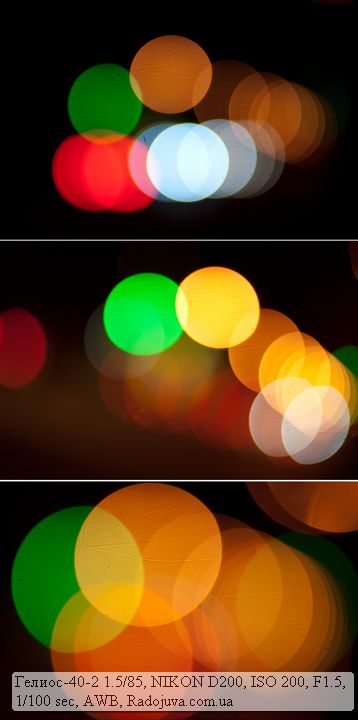
Bokeh on Helios-40-2 85mm F1.5
3. A focal length of 85mm on a Canon 1.6x crop gives EGF at 136mm. For Nikon crop with 1.5x EGF will be 127,5mm. On the crop, Helios-40-2 also remains an excellent portrait painter. The lens can and should be used at full frame, unlike Nikon DX or Canon EF-S lenses.
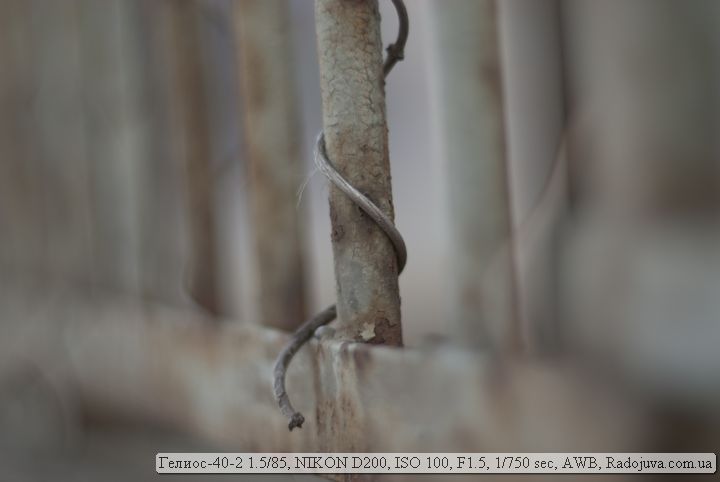
Photo on Helios-40-2 85mm F1.5
4. The lens has an additional aperture presetting ring. The aperture ring itself is located in front of the lens, and the preset ring is in the middle. Moreover, the pre-installation is very convenient, since its ring has a large grip. This is one of the few lenses where the aperture presetting ring is really handy. At the same time, the lens does not have a semiautomatic iris control (it does not have a diaphragm pusher for cameras).
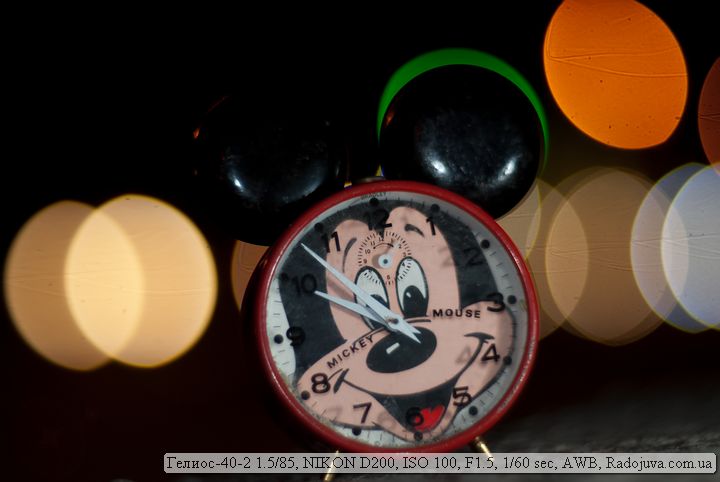
Bokeh on Helios-40-2 85mm F1.5
5. The focus ring has a smooth ride. A serious drawback of Helios-40-2 is the fact that the focusing ring is set too close to the camera mount. It is not very convenient to twist it. And even worse, the tripod socket clamp, which is located even closer to the bayonet, interferes with focusing. First, instead of focusing on focus, you twist the largest ring out of habit - the aperture preset ring. It's a little unnerving, but you get used to it over time. The focus ring is nut-like, not flat.
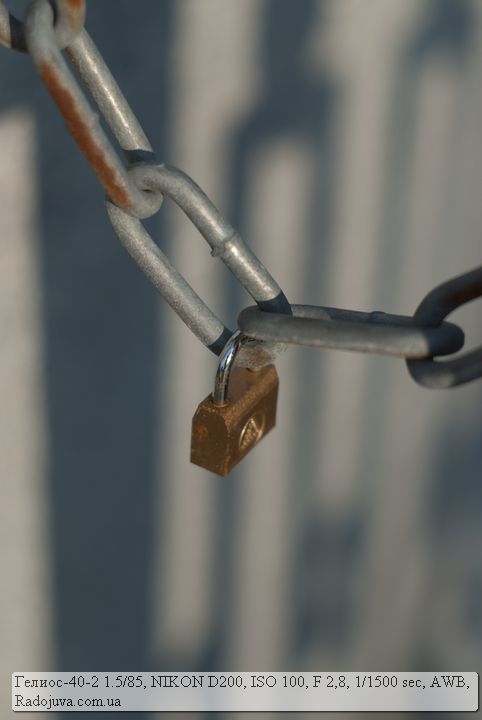
Photo on Helios-40-2
6. Helios-40-2 has a tripod socket. This suggests that the lens is really heavy, the clamp is near the mount to the camera. The clamp can rotate 360 degrees on the lens and is fixed with a special lock, which twists and clamps the clamp. Tripod socket is standard.
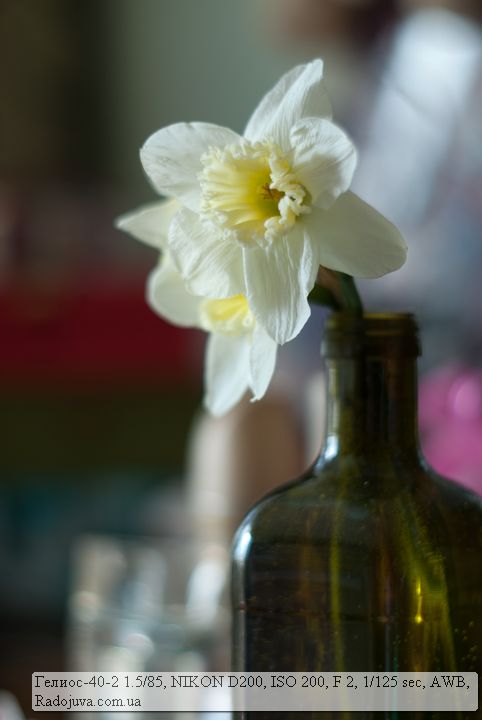
Sample photo on Helios-40-2
7. The lens Helios-40-2 10-blade aperture... The number of petals is more than average, but when it is closed, a hole is formed that looks like a circular saw. Luminous points in the out-of-focus area on closed diaphragms turn into a “circular” pattern. The lenses Tair-11A, Jupiter-37A, Jupiter-11, Jupiter-9 have even more petals and they form a fairly even hole without nuts and gears, therefore, they are more suitable as a portrait lens with closed diaphragms. Helios-40-2 is saved only by the fact that it gives the most interesting (from an artistic point of view) picture on a fully open aperture F1.5. Below is an example of a photo with circular saw blades in the out-of-focus area.
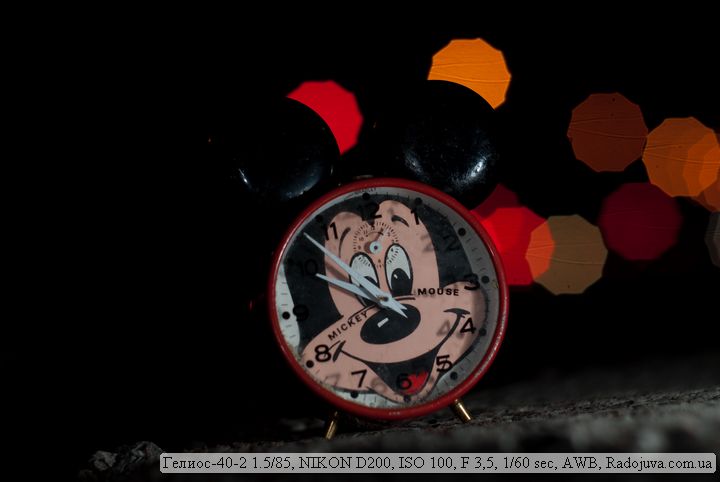
Bokeh on Helios-40-2 85mm F1.5 on aperture F3.5
8. The lens is quite heavy. On amateur lungs of TsZK's there can be a problem with weight balance. I think the same problem was when shooting on film Zeniths. On my kilogram Nikon D200 Helios-40-2 lens sits like a native, without causing inconvenience. Due to the large grip of the handle D200 very easy to control with Helios-40-2. I often have to shoot on a camera heavier in weight than one D200 + Helios-40-2. The weight of the lens and camera avoids movement when shooting handheld at slow shutter speeds.
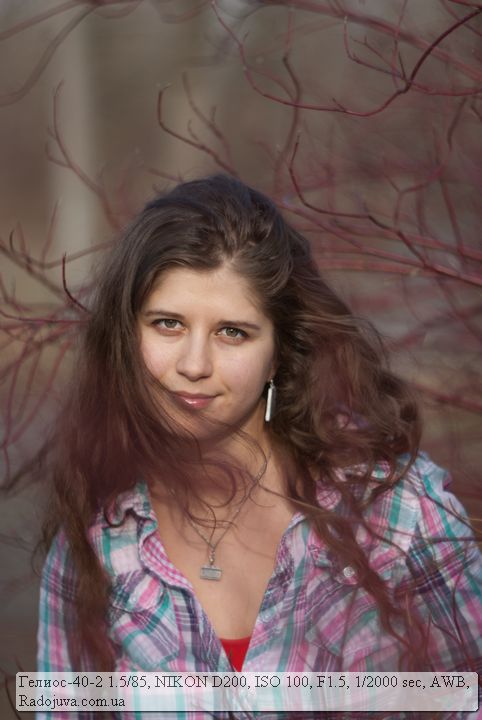
Portrait on Helios-40-2
9. The lens has enlightenment. I have never found reliable information about whether it is MS or not MS. The color of enlightenment is yellow.
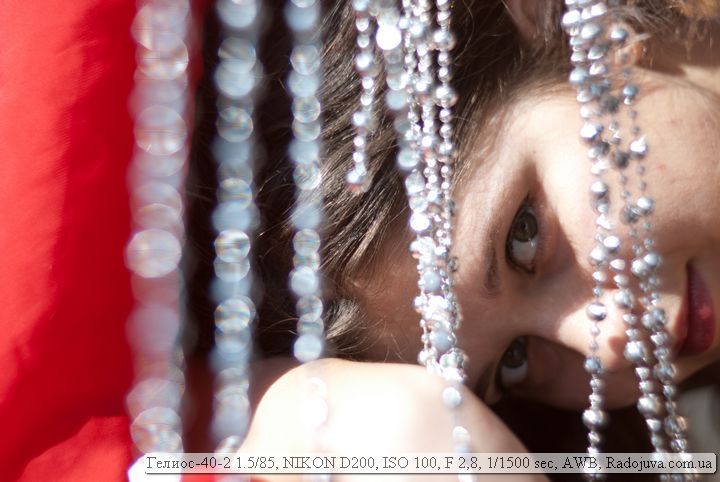
Example photo on a Helios 40-2 lens
Sample photos on Helios-40-2
All sample photos in the review without processing. Convert from RAW to JPEG with Q80% quality (without auto levels, etc.), reduced the size to 1600 * 1200 and imprinted data from EXIF. All sample photos were taken on Nikon D200 (crop factor matrices 1.5x). On my D200 the function key is configured to change the parameters of manual optics, therefore, it is very convenient to close the aperture to any value and immediately make adjustments to EXIF. Only, D200 allows you to set the minimum aperture only for values F1.2, F1.4, F1.8.
UPDATE 1
Examples of photos on HELIOS-40-2-N 1,5 / 85 and the camera Nikon D600 with readers of Radozhiva shared photographer Nelya Rachkova:
UPDATE 2
Examples of photos on HELIOS-40-2 1,5 / 85 (This one) with readers of Radozhiva shared photographer Igor Kurilov.
Each system has its own lens icons - these are lenses that people pray for and want to get. For Nikon, it's Nikon N AF-S Nikkor 85mm 1: 1.4G, for Canon is Canon LENS EF 85mm 1: 1.2 L II USM, and for Soviet Optics - this is Helios-40-2. This is a logical explanation, since the idol should always be.
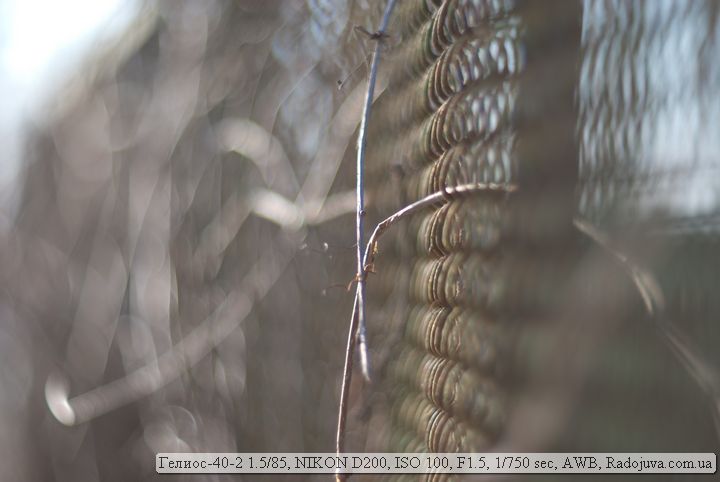
Example photo on a Helios-40-2 lens in strong lateral light
To buy or not to buy Helios-40 (2)?
If you ask such a question, then do not buy. People to whom it will really be useful know for themselves this and it will not be difficult for them to pay a tidy sum for the lens. I absolutely do not recommend Helios-40-2 to beginners who are looking for an addition to the whale lens. The best option for using the lens is in full frame. A full frame is not so cheap, people who shoot it have experience and will be able to get what they need out of Helios-40-2.
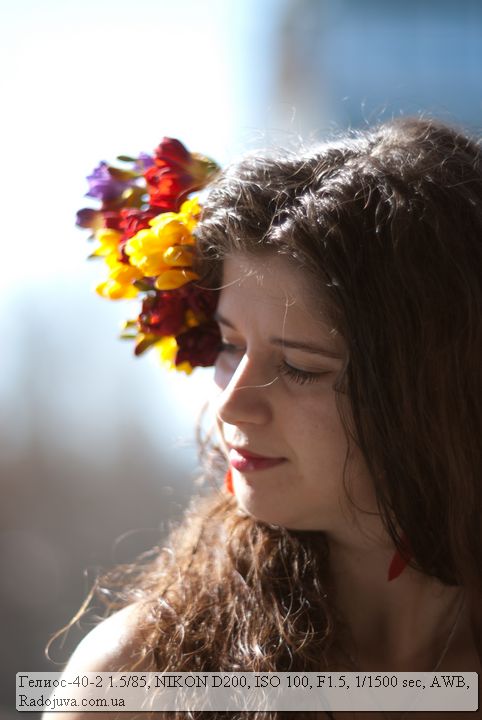
Portrait on Helios 40-2 in strong lateral light
Alternatives
By alternatives, I mean autofocus lenses with similar parameters. If you are looking for an alternative lens, there are many other options. From Soviet-like lenses, I recommend looking at white version of Jupiter-9 85mm F2.0... Jupiter-9 is an excellent portrait lens, it will be enough for a classic portrait. Slightly longer and much darker - medium format MS Vega-28V 2.8 / 120, which allows you to shoot gorgeous portraits. Another great alternative may be a relatively new and very high quality Samyang AE 85mm 1: 1.4 AS IF UMC (And
From the native optics for Nikon, you can look at the classic manual lenses Nikon Nikkor 85mm 1: 1.4 AI-S, Nikon Nikkor 85mm 1: 1.8 (and its many modifications) and Nikon Nikkor 85mm 1: 2. It is quite interesting that all these lenses have better sharpness and contrast characteristics throughout the field of the frame, but they are much less popular than Helios-40-2. Carl Zeiss Planar T * 1.4 / 85 and older Carl Zeiss Planar 1.4 / 85 C / Y options can also be an alternative. From modern autofocus optics, there are many options, but we are talking specifically about manual lenses with manual focus.
All autofocus 85s
Choosing a good 85mm portrait lens is very important for a large number of photographers. I pay a lot of attention to this issue, therefore I have prepared this list of all such autofocus lenses for full frame cameras with F <= 2 and a focal length of about 85 mm.
Nikon (F, Z mounts)
- Nikon 85mm 1: 1.8 AF Nikkor [December 1987]
- Nikon 85mm 1: 1.8D AF Nikkor [March 1994, Thailand/Japan]
- Nikon 85mm 1: 1.4D AF Nikkor [November 1995]
- Nikon 85mm 1: 1.4GN AF-S Nikkor SWM IF Nano Crystal Coat [August 2010]
- Nikon 85mm 1: 1.8G AF-S IF SWM Nikkor [January 2012]
- Nikon Nikkor Z 85mm 1: 1.8 S [July 2019]
- Nikon Nikkor Z 85mm 1: 1.2 S [January 2023]
Canon (EF, RF mounts)
- Canon LENS EF 85mm 1:1.2 L USM [September 1989
- Canon LENS EF 85mm 1: 1.8 USM [July 1992]
- Canon LENS EF 85mm 1:1.2 L II USM [March 2006]
- Canon LENS EF 85mm 1:1.4 L IS USM [November 2017]
- Canon lens RF 85mm F1.2L USM [May 2019]
- Canon lens RF 85mm F1.2L USM DS (DEFOCUS SMOOTHING) [October 2019]
Yongnuo/YnLens (different mounts)
- Yongnuo YN85mm F1.8 (YN85mm F1.8) [9/6, Canon EF, February 2017]
- Yongnuo YN85mm F1.8 (YN85mm F1.8N) [9/6, Nikon F, May 2019]
- Ynlens YN85mm F1.8S DF DSM (YN85mm F1.8S) [9/8, Sony E, August 2020]
- Ynlens YN85mm F1.8R DF DSM (YN85mm F1.8R) [9/8, Canon RF, May 2021]
- Ynlens YN85mm 1:1.8Z DF DSM (YN85mm F1.8Z) [9/8, Nikon Z, March 2022]
- Yongnuo 85F1.8S DF DSM [9/8, Sony E, August 2022]
Sony / Sony Zeiss ZA / Minolta (E / FE, A mount)
- Sony FE 1.4/85 GM (SEL85F18GM) [February 2016]
- Sony FE 1.8/85 (SEL85F18) [February 2017]
- Sony SAL85F14Z / Carl Zeiss Planar 1,4 / 85 ZA T* [June 2006]
- Minolta AF 85mm 1:1.4 (22) (AF lens 85) / Minolta Maxxum / Dynax / G / G+D / G+RS / G+D+LE and other versions of the same lens, A mount [1987]
Sigma (different mounts)
- Sigma EX 85mm 1: 1.4 DG HSM (two sub-versions with different body finishes, for Canon EF, Nikon F, Pentax K, Sony A, February 2010)
- Sigma 85mm 1: 1.4 DG | A [Art] (for Canon EF, Nikon F, Sigma SA, Sony E, Leica L, September 2016)
- Sigma 85mm 1: 1.4 DG DN | A [Art] (for Sony E, Leica L, August 2020)
Viltrox (different mounts)
- Viltrox PFU RBMH 85mm F1.8 STM (Sony E/FE + Fujifilm X, 2018)
- Viltrox AF 85/1.8 STM ED IF (Nikon Z, Canon RF, December 2020)
- Viltrox AF 85/1.8 II STM ED IF (Sony E/FE + Fujifilm X, July 2020, light version XNUMX)
Pentax (K mount)
- SMC Pentax-FA* 1:1.4 85mm IF AUTO FOCUS PENTAX 85 [1992]
- HD PENTAX-D FA * 85mm 1: 1.4 ED SDM AW [May 2020]
Samyang / Rokinon (different mounts)
- Samyang AF 85 / 1.4 EF (for Canon EF, scheme 9/7, June 2018)
- Samyang AF 85/1.4F (for Nikon F, scheme 9/7, April 2019)
- Samyang AF 85 / 1.4 FE (for Sony E, scheme 11/8, March 2019)
- Samyang AF 85 / 1.4 RF (for Canon RF, scheme 11/8, May 2020)
- Samyang AF 85 / 1.4 FE II (for Sony E, scheme 11/8, July 2022)
Meike (Canon EF, Nikon F, Sony E, Nikon Z, FujiFilm X)
- MEIKE 85mm AF 1: 1.8 [review] (Canon EF / Canon EF-S, April 2018)
- MEIKE 85mm AF 1: 1.8 [review] (Nikon F, Aug 2020)
- MEIKE 85mm 1:1.8 Auto Focus Lens FF STM [review] (for Sony FE/E + Nikon Z, Canon RF, FujiFilm X, June 2022 + March 2023)
- MEIKE 85mm 1:1.4 Auto Focus Lens FF STM (for Sony FE/E + Nikon Z, September 2023)
Zeiss (various mounts)
- Zeiss Sonnar 1.8 / 85 T * (Batis 1.8 / 85) [April 2015, built-in stabilizer, Sony E/FE mount, 11/8]
- Carl Zeiss Planar 1,4/85 ZA T* (Sony SAL85F14Z) [June 2006, Sony A/Minolta A mount, 8/7]
- Carl Zeiss Planar 1,4 / 85 T * [November 2002, Contax N mount, 10/9]
Tamron (different mounts)
- Tamron SP 85mm F/1.8 Di VC USD Model F016 (for Canon EF, Nikon F, Sony A [without VC function], March 2016)
Tokina (Sony E / FE mount)
- Tokina atx-m 85mm F1.8 FE (for Sony E, most likely a complete analog Viltrox PFU RBMH 85mm F1.8 STM, January 2020)
AstrHori (Sony E/FE mount)
-
AstrHori AF 85mm 1:1.8 [December 2022]
Panasonic (L mount)
- Panasonic LUMIX S 1: 1.8 / 85mm [November 2020]
Separately, you can still highlight non-classic 85s:
- macro lens Canon Lens RF 85mm F2 MACRO IS STM [2020, RF]
- longer LEICA APO-SUMMICRON-SL 1: 2/90 ASPH. (2018, Leica l)
- less aperture Sony 85 / 2.8 SAM (SAL85f28) [2010, A]
- shorter SMC PENTAX FA 1:1.8 77mm Limited (1997, K)
- shorter HD Pentax-FA 1: 1.8 77mm Limited (2021, K)
- shorter Samyang AF 75 / 1.8 FE (2020, E) + Samyang AF 75/1.8X (2023, X)
- cropped Samsung Lens 1:1.4 85mm ED SSA i-Function [2011, NX]
- cropped and longer FUJIFILM FUJINON LENS SUPER EBC XF 90mm 1: 2 R LM WR [2015, X]
- cropped and shorter Viltrox AF 75/1.2 XF STM ED IF [2022, X, E, Z]
- cropped, less aperture, macro lens Nikon DX AF-S Micro Nikkor 85mm 1: 3.5G ED VR SWM IF Micro 1: 1 [2009, F]
- many 90/2.8 class macro lenses
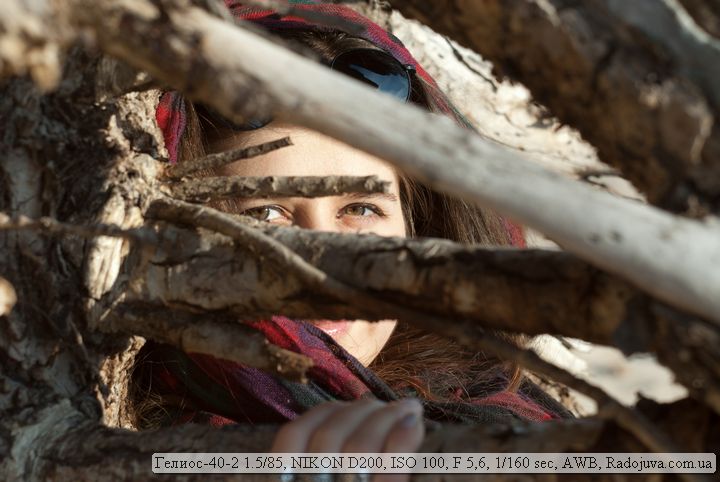
Example photo on Helios 40-2
Image quality on Helios-40-2
Under the image quality of Helios-40-2, some people mean its artistry, and another means its technical perfection. The artistry of the image produced by the lens is very interesting, with a special character. From the technical point of view, the Helios-40-2 lens has a slight vignetting, in the region of 1/3 stop at the corners of the cropped matrix. The vignette is almost invisible to the eye. Lens sharpness differs greatly around the edges and in the center of the frame. In the center of the frame, sharpness is excellent already at F1.5, sharpness at the edges starts at F2.8. Helios-40-2 has an interesting sharpness curve. Loss of sharpness from the center is a characteristic feature of the lens. Wide aperture is sharp enough to create a portrait. It is very interesting that HA (chromatic aberrations) in Helios-40-2 are very low. I was surprised that already at F2.0 Ha completely disappear. For example, Nikon AF Nikkor 85mm f / 1.8D is losing HA only at aperture F4.0. Such an excellent indicator HA on F2.0 there are units of lenses, for example, Nikon 85mm F1.4D etc. Like any other 85mm fast-fix, Helios-40-2 has minimal distortion, which avoids image distortion. On open diaphragms, Helios-40-2 gives light spherical aberrations (blurring of contours) that make the picture airy (see section monocle). The contrast of the lens at wide apertures is not very good. The lens is afraid of side and backlight. Color rendering is slightly lukewarm, but automatic white balance modern cameras can handle this easily. And, of course, bokeh is the fad of the lens. In the out-of-focus area, a motley swirling background is obtained. The circles of confusion are slightly compressed, like ellipses. Most of all, the background of the lens rotates at a fully open aperture at the edges of the frame.
It so happened that all the advantages and disadvantages are collected in Helios-40-2 in an unusual way and make it really a lens with character. In particular, Helios-40-2 is impeccable for creating portraits where smoothness, volumetricity and strong sharpness are not needed (especially for a female portrait).
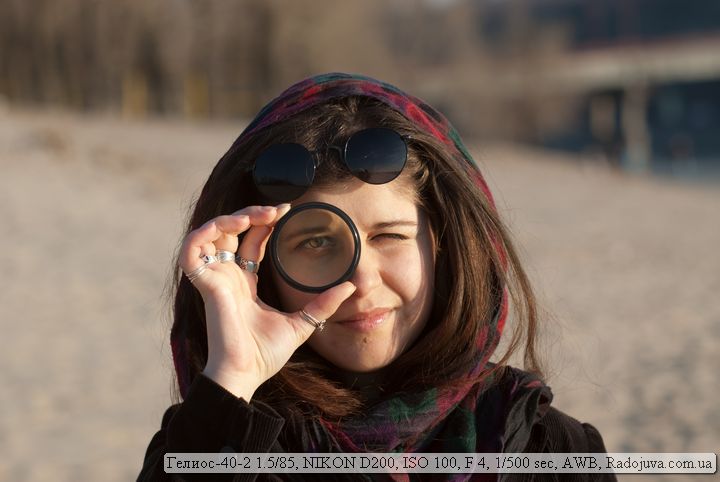
Photo at Helios 40-2
Personal impressions
I liked the lens. I only focused on the green dot in my viewfinder Nikon D200... Aiming is rather difficult, but my experience with manual optics helped me. I highly recommend everyone to use Live View for focusing. Personally, I like the fact that people are trying to squeeze the maximum quality out of the Helios-40-2 with mediocre MTF - this makes you photograph and train your dexterity, and not just press the shutter button. Since I do not have a full-frame camera, it is difficult for me to judge in full. I personally use a lightweight autofocus lens. Nikon AF Nikkor 85mm f / 1.8D, which many have forgotten, but which gives a predictable result. There are many discussions on the Internet about the quality of photographs taken with the Helios-40-2 lens - note that we can only talk about this or that actual copy, since the technique is quite old and many judge by the unsuccessful version of Helios-40-2, many simply never did not hold it in their hands. Also, there are a lot of discussions about its cost - in fact, in order to purchase Helios-40-2, it is enough to shoot 1-2 weddings or several photo sessions, so professionals should not have any problems with this. Amateurs, however, will not always be able to squeeze out all its potential from Helios-40-2 and realize a scene in which the Helios-40-2 lens will be a useful tool for creating photography.

Photo on Helios-40-2
Prices
Now they are selling an updated version of this lens. You can see the real prices for the lens from online stores at this link.
How to use with modern cameras?
Lenses with mounting thread M42 (M42 X 1 / 45.5), such as the lens from this review, are very easy to use on almost any modern digital camera (both SLR and mirrorless), for this it is enough to choose the right adapter (adapter). You do not need to carry out any additional steps to modify the lens.
The cheapest adapters can be found at Aliexpress.com... There are adapters (adapters) with a chip that provide more convenience during shooting, usually chips are used to confirm focus and / or metering exposure, and form the correct EXIF. The chip does not affect the image quality in any way.
For some SLR cameras (for example, with the Nikon F-mount), you need to use adapters with a corrective lens, which allows you to focus correctly at all focusing distances. For any mirrorless cameras, such a lens is not needed, and the adapter is a simple decorated hollow metal tube with an appropriate mount.
For SLR cameras
- Canon: For cameras Canon EOS with bayonet mount EF / EF-S need an M42-Canon EOS adapter, such an adapter with a chip can be found herewithout chip here.
- NIKON: For cameras Nikon DX / FXas well as for cameras Fujifilm и Kodak with a Nikon F mount, you need an M42-Nikon F adapter, you can buy such an adapter without a lens and a chip here, with a lens without a chip herewith chip without lens here, with lens and chip here. Why a lens? Why chip?
- PENTAX: For Pentax cameras with K mount, you need an M42-Pentax K adapter, you can buy such an adapter here.
- SONY/MINOLTA: For cameras with a Sony / Minolta A mount, you need the M42-Sony A adapter, you can find such an adapter without a chip at this linkwith a chip at this link.
- OLYMPUS/PANASONIC/LEICA: For cameras with a 4/3 bayonet mount (not to be confused with Micro 4/3!) You need an M42-4 / 3 adapter, you can buy such an adapter here.
For mirrorless cameras
- SONY: For cameras with 'E'/'FE' mount series SonyNEX и Sony Alpha you need an adapter M42-Sony E (aka M42-Sony Nex), you can find it at this link. An autofocus adapter is also available for these cameras. Techart PRO Leica M - Sony E Autofocus Adapterwhich can be found at this link.
- OLYMPUS / PANASONIC / KODAK / XIAOMI: For cameras with a bayonet mount Micro 4/3 (Micro 4:3) you need an adapter M42-Micro 4/3, you can find it at this link.
- CANON M: For cameras with Canon EF-M mount need adapter M42-Canon M, it can be found at this link.
- CANON R and RF-S: For cameras with Canon RF mount need adapter M42-Canon R, it can be found at this link.
- Nikon 1: For cameras Nikon 1 Series need adapter M42-Nikon 1, you can find it at this link.
- Nikon Z: For cameras Nikon Z series (FX/DX) need an adapter M42-Nikon Z, it can be found at this link.
- FUJIFILM X: For cameras with mount X need an M42-Fuji X adapter, you can find it at this link.
- FUJIFILM GFX: For medium format cameras G-mount need M42-Fuji GFX adapter, you can find it at this link.
- SAMSUNG: For cameras with NX mount, you need an M42-Samsung NX adapter, you can find it at this link. There are no adapters for the NX mini camera yet.
- PENTAX: For Q-mount cameras, you need an M42-Pentax Q adapter, you can find it at this link.
- SIGMA / PANASONIC / LEICA: For cameras with L mount you need an M42-Leica L adapter, you can find it at this link.
- LEICA: For cameras with a bayonet mount Leica M need adapter M42-L / M, you can find it at this link.
If you have any questions on compatibility and adapters - ask in the comments (comments do not require any registration at all).
Hack and predictor Aviator
Helios-40-2 is not the best lens from a technical point of view due to its sharpness only in the center of the frame at F1.5. From an artistic point of view, it has an unrivaled design with the legendary twisted bokeh. Anyway, Helios-40-2 at full frame will be able to interest professionals... For fans with a cropped matrix - I do not recommend it.
Familiarity with the Soviet Helios brand lenses I recommend starting with an inexpensive and common lens Helios-44-2 2/58 (aka HELIOS-44-2 2/58). The following links can look at modern lenses Zenitar и HELIOS.
Comments on this post do not require registration. Anyone can leave a comment. Many different photographic equipment can be found on AliExpress.
Material prepared Arkady Shapoval. Training/Consultations | Youtube | Facebook | Instagram | Twitter | Telegram
















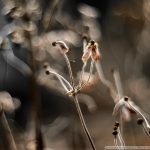
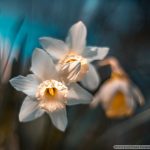
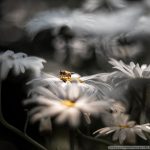

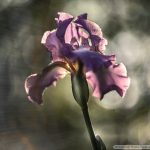

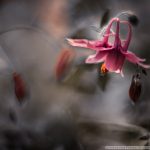
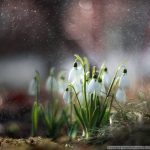




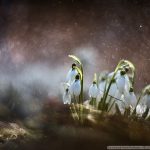
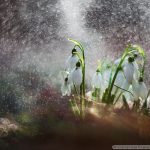
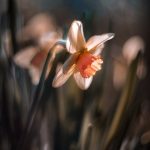
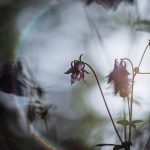
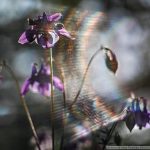

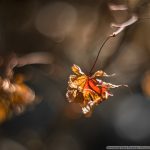
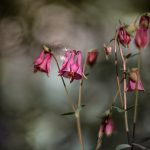
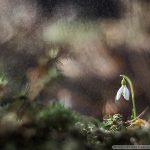

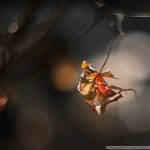
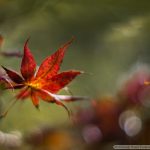
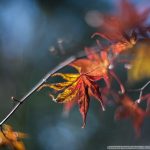

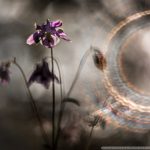
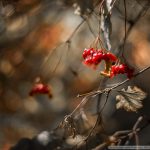
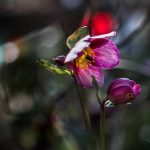
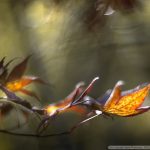


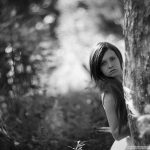





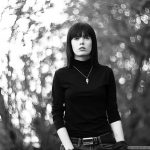


Finally, a sensible review without fanatically BLOODED photos and normal info. THANKS!!
I am trying.
The lens impresses with its appearance. Great review. Thanks!
interestingly
Yes, this lens is gorgeous! We must make it part of our collection !!!!
Thank you for another sensible and very informative review! There is no indiscriminate mockery of this glass, and no hysteria about "how cool he is!" I will express a couple of my thoughts on this glass and Soviet optics in general. I really love Soviet lenses, I take pictures with pleasure on Helios 81H and 77M4, and I hope to get hold of Jupiter 37A in the summer. I consider the main advantages of Soviet optics to be its price, manuality, drawing and quality of some lenses. I want to dwell on the price especially. In connection with the excitement for Soviet glasses, the price for them is increasingly becoming inadequate. The real price, which I am at least ready to pay, for all Soviet optics is 1000-1200 UAH. ($ 120-150). Now let's look at the prices of Soviet glasses at the aukro type flea market. For Helios 81H and 77M4 they ask for up to 800 UAH. Add another UAH 300 here. for Lushnikov's dandelion. For Jupiter 37A they ask for 750-900 UAH. For the World 24H they are asking for 1200-1500 UAH. And, attention !, for Helios 40-2 they ask 9000 (nine thousand) UAH!
I can understand everything, but to pay for glass, which is clearly second-hand, it is not known what its condition is, which, perhaps, needs to be sawed to infinity (I have a Nikon system) and on which it is very desirable to put a dandelion - thank you! The article correctly indicates the analogs of this glass. Moreover, Nikon 85 f / 1.4D AF Nikkor pulls at UAH 9200-9600, Nikon 85 f / 1.8D AF Nikkor - UAH 3700-4300, Nikon AF-S 85mm f 1.4G - UAH 14500. Here they correctly wrote that it is better to use such glass on FF., And FF implies in most cases the professionalism of the owner. Consequently, 1000 bucks for glass is not a question, but all other things being equal, Helios 40-2 can be bought only for the collection! All these fabrications have nothing to do with the lens as such. This is undoubtedly a very interesting glass that our optomechanical industry can be proud of. But! It makes sense to use it only if you own this lens as an inheritance. Buying this glass is pointless, it DOES NOT WORTH your money!
Crelian, thanks for the bright thoughts and prices of other lenses!
Indeed, reasoned and clearly stated! Prices are definitely too high and not entirely justified ...
>>> Prices are definitely too high and are not quite justified ...
ICHSH, before the mass distribution of affordable digital SLRs, all these "alloys of window glass and winged metal" (©) lay and were sold at flea markets for a penny, nafig nobody wanted. And now ... instead of a seemingly affordable alternative - Soviet manual glasses - it is sometimes cheaper to buy new samyangs, or brand second-hand ones!
As a half-impoverished amateur photographer, I hope that at least the Internet speculators incineration plant being built next door won't break down ...)))
This lens really has a very “glamorous” design, somewhat reminiscent of the optics of “wood”. I got acquainted with its original (silver) version back in 1981. Took a friend to try. I screwed the lens to my “Zenith-3M” and got a completely unexpected “picture” when shooting in the studio: with a noticeably low contrast, an extremely plastic, vivid image, written like a brush. Alas, I no longer had the opportunity to re-use it or buy it ... By the way, it was so heavy that it outweighed the apparatus fastened to the tripod and in my absence crashed onto the tiled floor, tearing off the optics mounting ring completely from the Zenith. The camera was shattered, and the "Helios" that had been found in the corner, had anything! Well, there is a dent on the front edge of the case ...
The modern figure gives life not only to low contrast lenses, but also holds good weight balance with heavy lenses.
Arkady, thanks for the review of the legendary glass.
Crelian, well, the prices at your flea markets.
At the same aukro, the price of Jupiter 37A rarely greatly exceeds 500 UAH. And Helios 81N in good condition can easily be taken for 350.
A year ago, I took without problems G-81N for 250UAH
Thanks for the interesting review, I liked it.
About “Interesting conclusions, near which you simply cannot pass by, on the page Myths and Reality of Helios-40 (2).”
The main and most interesting part of the branch moved from photo production. For political reasons.
Here: http://www.futajik.ru/forum/index.php?showtopic=17182
During the year all posts will be reposted (144 pages of articles, essays and correspondence).
I really like the manual Nikkor 85mm f / 1.8 (which K) costs about $ 220 in good condition.
And I took just a few months ago G 81N for 200 UAH., True, without covers. And I took Yu 37A for 400 hryvnias., In perfect condition and full set, with covers, case and hood.
Say be a weasel: I have less than Е HELIOS 40, so I can do it without any need and don’t turn on my camera with the Nikon D3100!
Oh and dear this Helios :)
Thanks for your great reviews!
It's my pleasure :)
I completely agree with one of the "above unsubscribed" - there are many "legends" around this lens, but I also think that its main place is on the collector's shelf (like its "older brother" Jupiter - 6). By the way, in the Soviet Union he, "Helios - 40", cost only 60 rubles - says a lot. I think that this lens owes all its glory to EXCLUSIVE APPEARANCE. I did not notice any other merits for him, although I had it three times: two “black” ones and an old one, “silver”. I still shudder to remember their terrible "ergonomics" ... When in 1985 I bought Nikkor 1.4 \ 85mm AiS with great difficulties and tricks, I felt happy ... This, of course, is just my opinion - it does not oblige anyone to anything, but I will allow myself to give advice to beginners: do not spend 500 - 1000 USD. for this hybrid of a dumbbell with a door peephole ... Jupiter - 9 will provide the result no worse, but it costs several times less - with greater ease of use and reasonable weight and size parameters. Regards, George.
Thanks. All comments are factual.
Everything is contrived, or it depends on the specimen of the lens, Jupiter 9 is good but only in the light, if equal and with a flash it gives a normal picture,
and helios is very cheerful and bright, as in a magazine when staged and other gadgets
60 rubles in the USSR were serious money, and not everyone could afford such glass.
But in reality the lens is very unusual, interesting and will always find an admirer for itself. Here it tastes and colors ...
jupiter 9 dull shit compared to helios 40-2
do not mislead people
Thanks a lot!!! Great site, great reviews !!!
Not at all.
Good afternoon, my question is ripe, when using this lens with an adapter with a Nikon lens. Will the lens in the adapter kill this wonderful lens design?
Do not kill.
Thank you.
Please tell me. If you have Kaleinar and Helios 80, is it worth buying this one
Thank you
And what kind of beast, Helios-80?
I was tired of something yesterday and wrote in the wrong place, and made a mistake with the notation. I meant helios 81n
I apologize for not writing there I wanted to ask about Jupiter 37A
I don't see the point of buying Jupiter after Kalainar.
Yes, in principle, the state of Jupiter is much worse and without adapters. Therefore, I leave myself Kaleinar, I liked the photos from him very much. Thanks for the reviews and answers to your questions.
Thank you very much again for the reviews - I often refer to them and recommend them.
In the article "Soviet optics on Nikon" you write: "The greater the focal length, the greater the maximum focusing distance with the KP-42 \ N." Tell me, what is this distance from Helios 40-2 on Nikon from and to at least approximately from personal experience? Does this distance change on a full frame? Have you come across "branded" adapters with a high-quality corrective lens. And which one do you personally use?
Thanks again!
Everything is written in the article, take a look under the paragraph
How to use Helios-40-2 on modern SLR cameras?
The distance on the full frame does not change. Branded adapters do not exist. I use the one presented in this review.
Sorry! In your article, 2 options are indicated with and without a lens. Which one you used is not indicated. There are no words about the maximum focusing distance either ... ..
Once again I ask you to re-read the article, and then ask, or for whom is it written “1.5-2 meters”.
Krasnogorsk plant resumes production and sale of Helios 40-2 (cost 8041 rubles) http://mf-lenses.livejournal.com/732142.html#cutid1 and a number of other lenses.
Hi Arkady! I liked how the lens draws, what the picture is, straight art.
An interesting question is, which of the modern auto focus lenses or not, can it approximately look like helios 40-2 for the Nikon system?
Just like Helios - none. Nikon 85mm F1.4 d / g gives a good picture
Guys, it’s much cheaper to take Cyclops, this is helios without petals, that is, always at f1,5. Helios makes sense only in open shooting, so I find the Cyclops more interesting and more convenient.
KMZ OJSC has resumed production of three photo lenses! Open Joint Stock Company Krasnogorsk Plant named after S.A. Zvereva ”(OJSC KMZ) resumed production of the“ Mir-20M ”,“ Helios 40-2 ”and“ Telezenitar 2,8 / 135 ”lenses. The cost of the Helios 40-2 8 041 rub lens (infa from the factory website)